
11 minute read
Discovering Cocos and Keeling Islands: A Fly Fishing Paradise Beyond the Horizon
Discovering Cocos and Keeling Islands: A Fly Fishing Paradise Beyond the Horizon
If I were to start this article by telling you to close your eyes and imagine yourself on an atoll in the Indian Ocean, covered with white sandy beaches, palm trees in every direction, turquoise blue water with wadable flats for miles, casting to double-digit bones, hungry packs of GTs, triggers as big as dinner plates, and the fabled bumphead parrotfish, it would be a pretty safe assumption that this was another article about the Seychelles. Another article about a great land far away with an equally out-of-reach price of admission. This is not that article. There is another, less famous gem in the Indian Ocean that fly anglers from all over are quickly discovering: the Cocos Keeling Islands.
By: JOSH CHEONG // Pictures by: EUGENE PAWLOWSKI
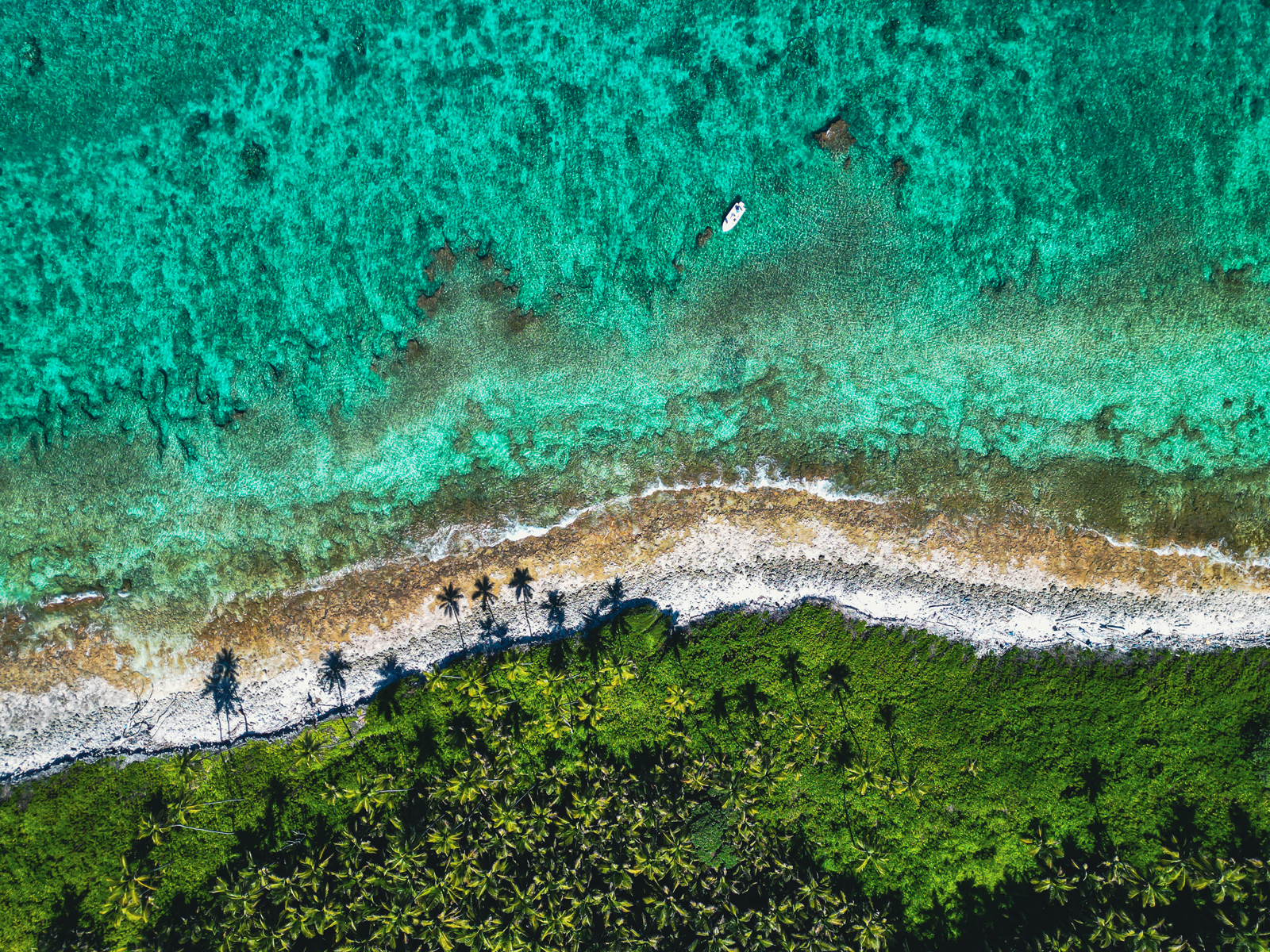
The Cocos Keeling Islands lie some 2,100 km off the western coast of Australia. Covering an area of 14.2 square kilometers and made up of 27 islands, they offer a diverse range of fishing styles from reef edges, surf lines, and ankle-deep flats—all waiting to be explored with a fly rod in hand, a small pack of essentials, and a good pair of wading boots.
This is the perfect destination to give beginners, who may have only fished for trout, a taste of saltwater fly fishing, while also dishing out challenges to keep seasoned pros occupied.

Things Are Done a Little Differently Around Here
Upon flying into the main island of West Island, you quickly discover that things are done a little differently here as you’re thrown headfirst into “island life.”
The airstrip runs 3 km down the 9 km of this skinny island. You climb out of your air-conditioned seat, step off the plane, and are smacked in the face by the warm, slightly humid temperament that you’d expect from a tropical island. The runway has no fences, with the main road of the island right beside it, and residential houses next to that. Your luggage doesn’t come off on some fancy conveyor belt; instead, it’s driven up to the doors with the same buggy and carriage it was unloaded from the plane with.
Unloading is done by yourself as you hastily search to ensure all your luggage has arrived on the flight, not just your nominated “priority bag.” A quick safety briefing later, and you’re let out of the terminal like a bunch of excited school kids at the end of term.
As you drive to your accommodation, you solve some of life’s great mysteries. “Why did the chicken cross the road? To get away from the crabs!” as you dodge both and the odd fallen coconut on the road. Nothing is far away here.
Your accommodation is probably walking distance from the airport, and the fishing flats are the same distance again. Just don’t cross the runway - that’s the number one rule.
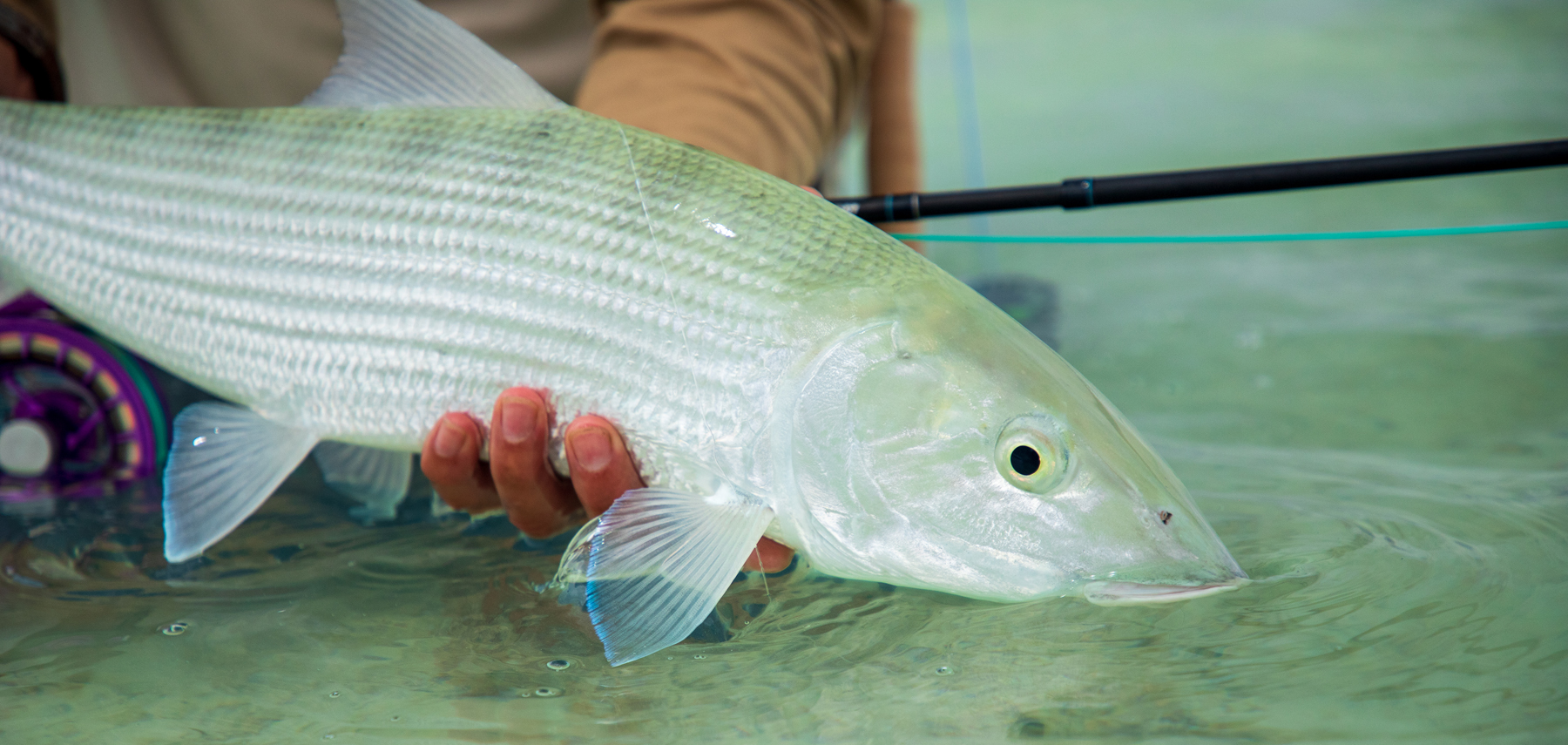
A Postcard in Every Direction
The Cocos Islands really give you the quintessential tropical island experience. That tropical island getaway you’ve always seen on TV or in magazines unfolds right in front of you. From palm trees and coconuts to beaches largely undisturbed by humans, it really is a postcard in every direction and a wonderland for anglers who also take a keen interest in photography, like myself. I have done several trips to the islands now, and each and every time, I come away with new and exciting images to share with friends and family.
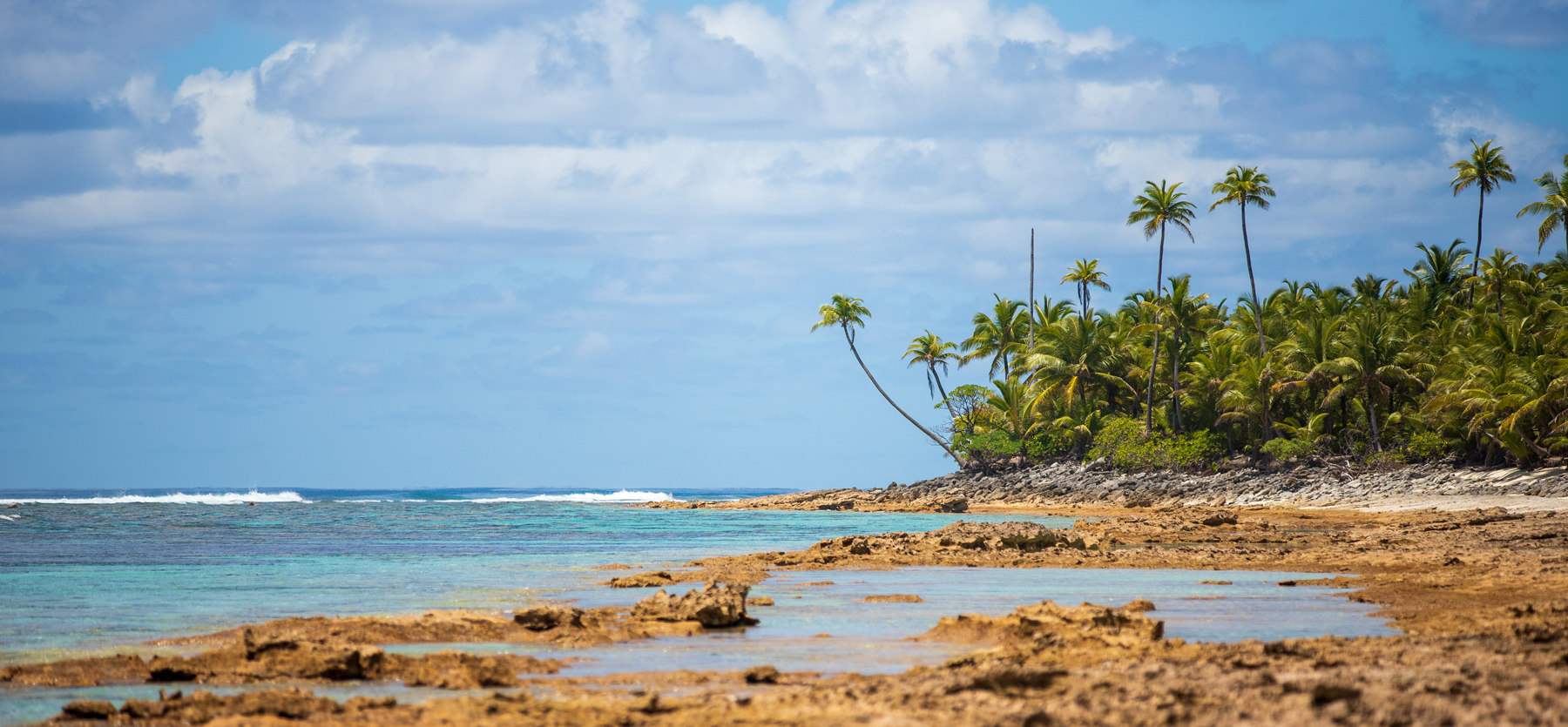
What to Target First
With a host of species on offer, it really is an angler’s paradise in terms of species diversity. One day, you can be targeting GTs on the surf line; the next, you can be fishing just a few hundred meters away from that same spot with a very real chance of a sailfish. But for most anglers, bonefishing is what will be first on their minds - an iconic fly species that is challenging enough to keep you interested but forgiving enough to prevent you from pulling your hair out.

Bonefish
Bonefish inhabit a variety of habitats on the Cocos Islands. These silver, speedy torpedoes can be found both reef-side and within the atoll’s large lagoon. For me, and I’m sure for many others, it’s the lagoon fishing that is the major drawcard. The thought of sight casting to tailing fish in ankle-deep water is what saltwater fly fishing dreams are made of.
“20 to 30 fish days are not uncommon”

Luckily for us, these dreams can become reality if you approach slowly, quietly, and with an accurate cast. On a good day, it’s possible to lose count of the number of fish you encounter - 20 to 30 fish days are not uncommon, and you’ll soon find yourself passing up smaller fish in the hope of finding a trophy.
For bonefish, an 8-10wt rod will cover all situations, with a 9wt being ideal.

While traditionally a little heavy, the bones at Cocos are of good average size, and fish in the 70cm+ range are not uncommon. This setup also helps get the fish in quickly and healthily to avoid the resident reef sharks, as well as assisting with punching out an accurate cast into a head or crosswind.
Floating lines will suffice, but floating lines with a clear sink tip allow you to get your fly into the zone quickly. Bonefish respond best to presentations on or very close to the bottom, so getting your fly there as quickly and as stealthily as possible greatly increases your chances of a hookup. Heavily dressed shrimp flies excel at Cocos.
Don’t be afraid to use larger flies, either—shrimps tied on #2 hooks work very well. On days when the fish can be a bit fussy, you can always downsize to your “typical bonefish flies” to entice a bite.


GTs
While there are a few locations where GTs regularly roam, they are a nomadic species that can appear anywhere at any time, so it pays to carry a rigged GT rod with you at all times. If you are serious about catching a GT, don’t mess around with anything less than a 12wt with a robust reel to match. While your average Cocos fish might be 10-15 kg, a 30 kg fish is not out of the question, so having the gear to handle such a predator is a must. GTs don’t come easy, so doing everything you can to put the odds in your favor will pay dividends when it comes to finally connecting to that dream fish. Don’t overcomplicate your setup - a floating line to an 80lb-130lb straightthrough leader to a black/purple brush fly is usually all that’s needed.

The Rest
While bonefish and GTs are the main target species for anglers, there are a host of other species that call this beautiful part of the world home. Bluefin trevally, red bass, passionfruit coral trout, barracuda, bumphead parrotfish, triggerfish,
and permit are just a few of the species that may be on offer on any given day and make for a great change of pace when you’ve caught your 10th, 20th, or 50th bonefish for the week. While some species will cohabit, it pays to do some research to try and nail down the exact gear and tactics required if you plan on chasing these additional species.
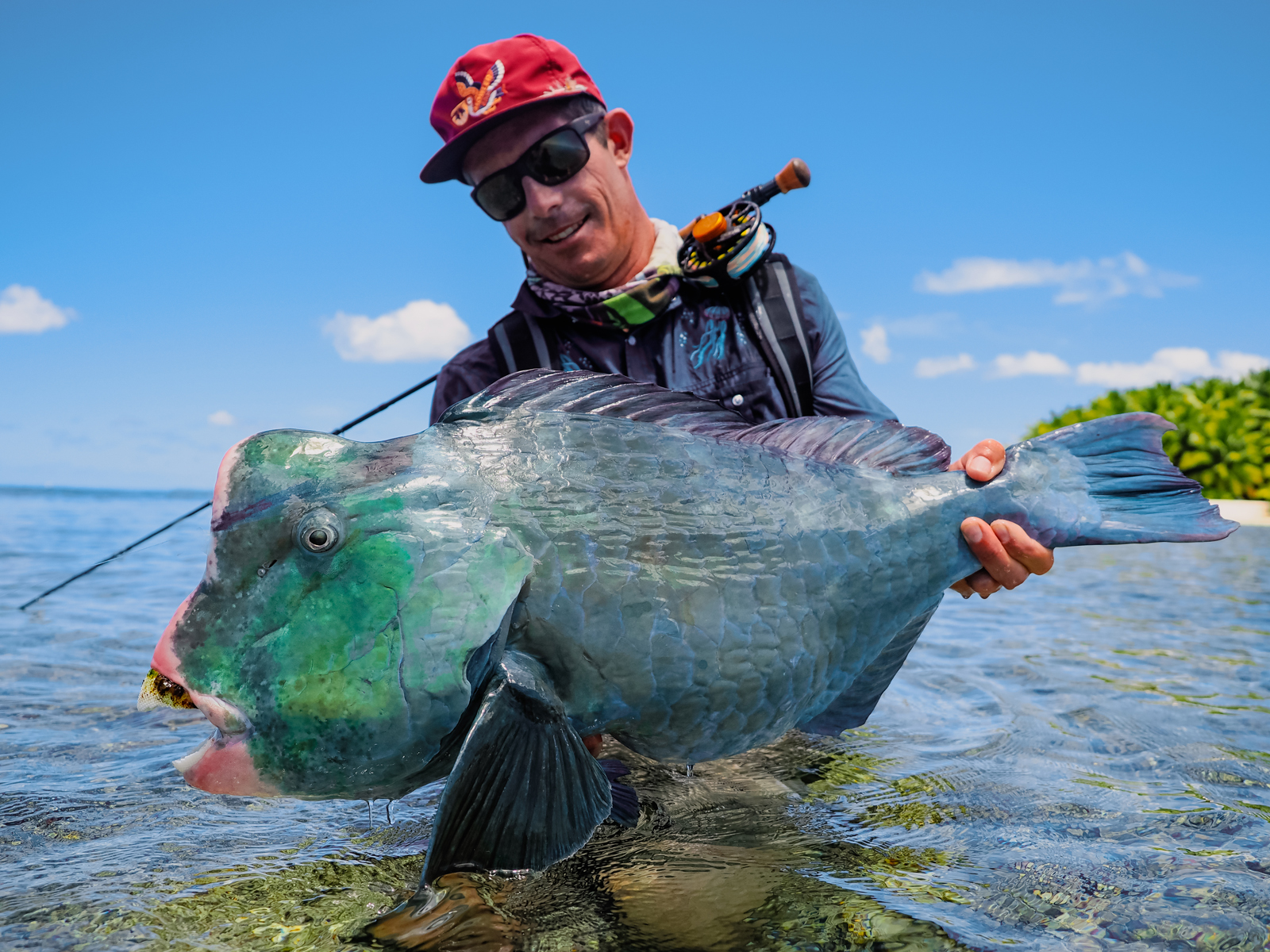
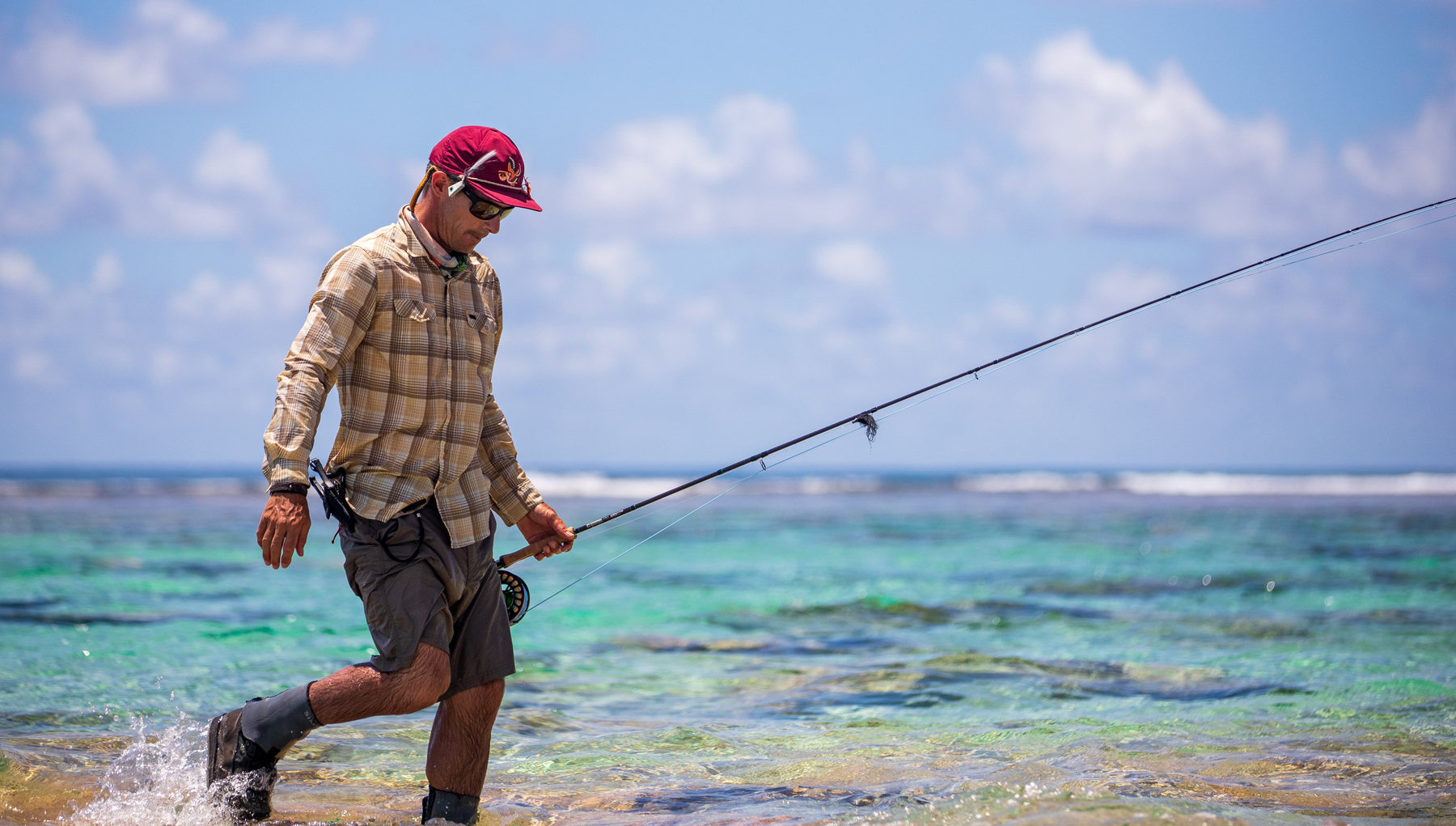
The Essentials
• Tackle: If only packing two rods, I’d take a 9wt and 12wt. If you’re packing three, an 8wt, 10wt, and 12wt. A fly box with a good selection of shrimps, crabs, and a few larger baitfish in a variety of sizes. Leader material from 16lb through to 120lb would be a great selection that covers you for 95% of the fishing available at the Cocos Islands.
• Waterproof Backpack: A good quality waterproof backpack or sling bag is a great investment when working the flats. I recommend one with a waterproof zip as opposed to the traditional roll-top variant, as it makes getting in and accessing your gear that much easier.


• Waterproof Backpack: A good quality waterproof backpack or sling bag is a great investment when working the flats. I recommend one with a waterproof zip as opposed to the traditional roll-top variant, as it makes getting in and accessing your gear that much easier.
• Quality Wading Footwear: You’ll be spending a lot of time wading at the Cocos Islands, so looking after your feet will ensure you have a trouble-free stay. Make sure to have well-fitting boots and invest in a pair of neoprene socks to keep out the sand and coral.
• Sun Protection: The sun bites differently at Cocos. Expect very high to extreme UV ratings, which can be quite a shock if you’re not used to fishing in these tropical waters. You will benefit greatly from wearing sun-protective clothing, not only to keep from getting burnt but also to keep cool and prevent heatstroke. A buff, hat, and long-sleeve shirt are a minimum, but don’t neglect your legs and hands either.

• Polarized Sunglasses: A pair of good-quality polarized sunglasses is a must—not only to look after your eyes but also to allow you to spot fish much more easily than without them.
• Spares: The islands are very remote, and it pays to bring spares of important items with you, as re-
placing lost or broken items once on the island is not going to happen. If traveling as a group, split the spares between you to reduce weight. At a minimum, I’d take a spare fly line for each setup, plenty of leader material, and a spare rod or two.

DIY or Guided
A DIY trip is very possible with wadable flats surrounding the main island of West Island and ferries that can take you between some of the surrounding islands. However, to maximise your time and get the most out of the money you spend just getting there it pays to enlist the services of a guide or lodge to fast track your success. My trips have always been with the guys from Hello Backing Fly and Sportfishing.
Nick has put together a fantastic operation with some very keen and knowledgeable guides whose passion is to put you onto fish. A host of modern sports fishing vessels, including a Maverick and Hells Bay skiffs, allow for quick and efficient transport across the flats, as well as providing a rock-steady platform to fish from.
They also have a Sportsman 19 Reef, which is perfect if you want to target something a bit larger, like a sailfish or GT on fly. Having the ability to move quickly and efficiently around the lagoon will allow you to fish the right flats at the right tide, a task not so easily done on foot. For more info: www.hellobacking.com.au
Cocos and Keelings
The season runs from late October – May. These are the least windy months as the trade winds subside over the summer months, it does get pretty warm but no different to any other tropical flats destination.
Cocos Islands Keeling Islands, also called Keeling Islands, external territory of Australia in the eastern Indian Ocean. The islands lie 2,290 miles (3,685 km) West of Darwin and NW of Peth and about 560 miles (900 km) southwest of Christmas Island (not to be confused with the one in the pacific).










